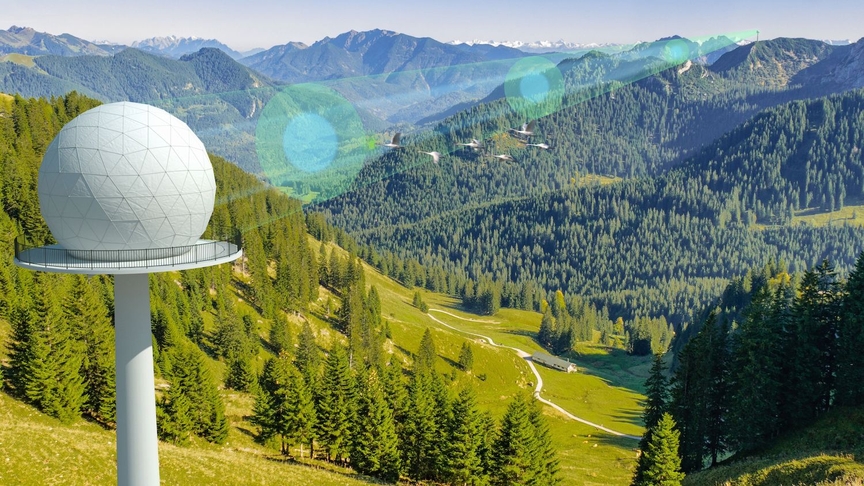Introducing Emrod's Worldwide Energy Matrix: A Revolutionary Approach to Global Energy Distribution

Over the years, power lines have been the linchpin of the energy industry, conveying vast amounts of energy from generation points to consumer endpoints. The U.S. electrical grid stands as a colossal testament to this, representing the largest interconnected machine on Earth. It spans over 200,000 miles of high-voltage transmission lines and 5.5 million miles of local distribution lines, linking thousands of power plants to the domestic and commercial units they power.
However, the energy distribution landscape is shifting dramatically.
The traditional model of energy production, which favored centralized, easily regulated sources primarily from oil and gas, is giving way to a cleaner, more sustainable, renewable-energy-based economy. This fresh paradigm pivots around diversely distributed and variable energy sources, mainly solar and wind power. Importantly, the effective distribution of this renewable energy to where it is needed most necessitates the creation of steadfast connections from the energy generation sites to consumption points.
Adapting to this change with established powerline technology is a formidable task. Countries would be tasked with constructing thousands of new transmission lines, all while creating a sustainable network of renewable energy sites.
But, could there be a more pioneering approach?
Envision an energy grid that emulates wireless communication networks, wirelessly transmitting power from its generation point to its consumption point. This concept is no longer a far-off dream, but an imminent reality with Emrod's innovative space-based wireless power transmission system, the Worldwide Energy Matrix (WEM).
In this article, we delve into how WEM has the potential to transform the renewable energy sector, optimizing energy generation and consumption, thereby propelling the global shift towards a carbon-neutral future. WEM's promise lies in its potential to revolutionize our interaction with and understanding of energy, providing a glimpse of what our energy future might encompass.
How does WEM work?
Emrod's WEM system deploys highly efficient wireless power transmission technology to establish a global energy transmission grid. Terrestrial transmitters and receivers collaborate with space-based relays to transport significant volumes of renewable energy.
Step 1: Electricity generated from a source on Earth is converted into electromagnetic energy and transmitted in a collimated beam to a relay satellite.
Step 2: In space, a constellation of orbiting satellites forms a global power grid. The beam is electronically steered to send energy from one relay satellite to another.
Step 3: Satellites redirect the power beam to the instructed locations, such as one or more satellites, or one or more locations on Earth.
Step 4: Back on Earth, the incoming electromagnetic beam is converted back into electricity. A communication signal can also be encoded onto the energy beam, allowing information to be assigned to the energy beam for tracking and transparency purposes.
This network's chief goal is to deliver surplus energy from regions flush with renewable resources but low local demand, to areas with high demand that exceeds local generation capacity. Regardless of geographical constraints or temporal generation patterns, WEM allows for the efficient long-distance transmission of renewable energy.
Bridging the Gap Between Supply and Demand: The Story of Japan and the UAE
The potential impact of WEM can be illustrated with Japan and the United Arab Emirates (UAE) as examples. Japan, the world's fifth-largest energy consumer, harbors lofty ambitions to stabilize its energy supply and reduce costs. While Japan has made commendable progress in solar energy generation, it grapples with challenges such as inconsistent generation patterns and limited solar potential. Conversely, the UAE enjoys considerable solar PV potential and a low Levelized Cost of Energy (LCoE).
By linking solar-rich UAE and energy-demanding Japan, WEM can bridge supply and demand discrepancies. The synchronization of peak solar generation in the UAE (12:00-13:00 local time) with peak evening demand in Japan (17:00-18:00 Tokyo time) represents an enticing opportunity. During these hours, Japan can import solar energy from the UAE, capitalizing on the substantial price differential between the UAE's low LCoE and Japan's average wholesale electricity spot prices.
To learn more about renewable energy intermittency challenges and solutions, head to our blog Unpacking Renewable Intermittency: Challenges and Solutions for a Sustainable Energy Future.
The Benefits of Emrod's WEM
Emrod's WEM system provides a plethora of benefits to both supply-side and demand-side nations. For countries like Japan, it offers access to high-grade renewable resources at optimal times, reducing dependence on fossil fuel generators. By importing renewable energy from regions with ideal supply-demand pairs, countries can ensure a low-cost, round-the-clock renewable energy supply without escalating price volatility or grid instability. This accelerates the adoption of renewables and aids countries in reaching their energy transition objectives.
Furthermore, for countries abundant in renewable energy resources but with limited local demand, the WEM system provides opportunities for exporting surplus energy to regions with higher demand. By democratizing renewable energy transmission, Emrod's WEM diminishes the need for expensive grid infrastructure investments and stimulates the global transition towards cleaner, more sustainable energy sources.
Emrod's Worldwide Energy Matrix stands as a groundbreaking solution to the challenges of global renewable energy transmission. By harnessing space-based wireless power transmission technology, WEM facilitates the efficient transportation of renewable energy across enormous distances, aligning supply with demand and fast-tracking the transition to a carbon-neutral world. This innovative approach not only optimizes renewable energy generation and consumption but also promotes energy independence, curbs reliance on fossil fuels, and carves the path to a more sustainable future.


